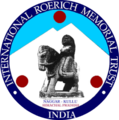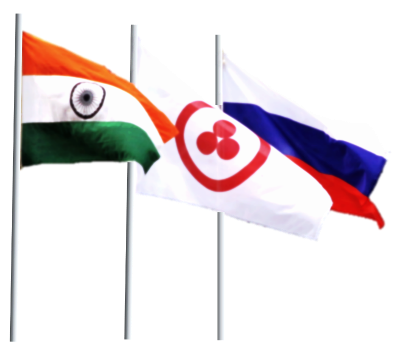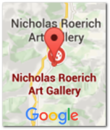The Roerichs' Memorial House
The First Floor of the House was the sanctum sanctorum of the Roerich family, outsiders were rarely allowed there, and nowadays visitors can see the interior decor of the upper floor rooms only through the windows from the open gallery around the House. The gallery was erected around the house in the 1990s altered the historical appearance of the House. However, it gives a chance to visitors to see the interiors which surrounded the Roerichs and feel the creative atmosphere in which they worked and thought.
When the Roerichs were leaving the estate in January 1948 after Nicholas Roerich’s death they took lots of relics, thangkas and paintings from the House with them. But the preserved interiors, furniture, books, artworks help us imagine the atmosphere of spirituality, beauty and nobility in which the Roerichs lived. As Vladimir Shibayev recalled, “In his constant hard labour Nicholas Roerich required nothing for himself, he was content with the smallest. The painter was convinced that luxury is incommensurable with either beauty or knowledge...”
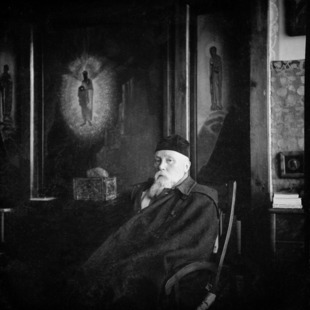
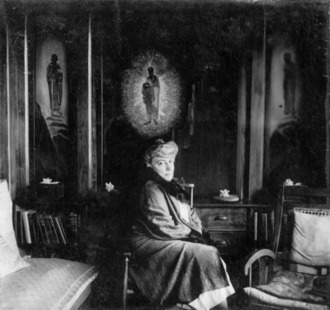
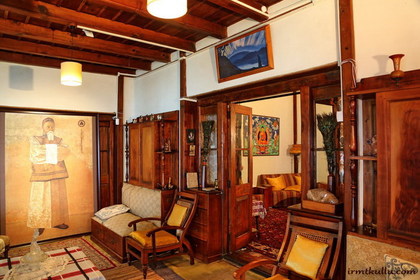

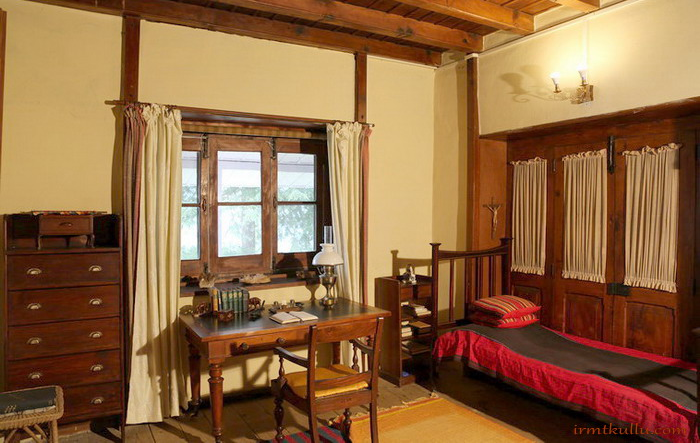
The ivies of wisteria and rambling rose frame the southern entrance to the House where you can find the Nicholas and Svetoslav Roerich Art Gallery created in the early 1960s by the artist’s youngest son Svetoslav Roerich. Here used to be Nicholas Roerich’s studio, George Roerich’s study and the study of Nicholas Roerichs's Secretary Vladimir Shibayev.
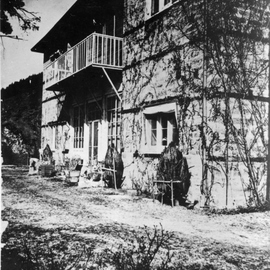
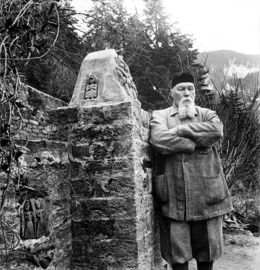

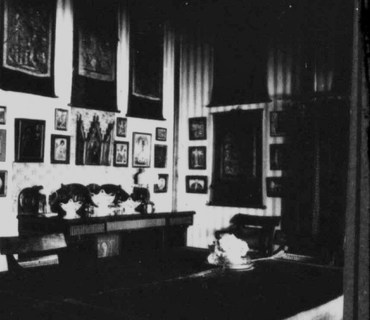
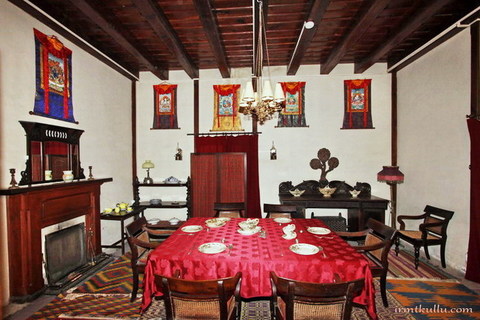
The Roerich Memorial House is the core of the Museum complex of the International Roerich Memorial Trust. The memory of this outstanding Russian family that lived here for nearly 20 years is primarily associated with this House. The House is closely connected to the key aspects of the Roerichs’ creative work: artistic, scientific, philosophical and literary. Here the greatest works of art were created, brilliant scientific breakthroughs were made and enormous social work was being done. Here the foundations for the Russian-Indian friendship and cooperation were laid. On entering the House you can feel the spirit of the past. Time has preserved here perennial historical, memorial, artistic, and, most importantly, spiritual values.
... It was an early frosty morning when this house first appeared before the eyes of Nicholas Roerich, his wife and sons. It stood on the hillside overlooking pine forests and snow-capped peaks of the Himalayas. The Beas River could be seen far below. Seemingly close, where the source of the Beas was, the twin peaks of Mt. Gepang glittering with snow were towering up – the mountain that Helena Roerich would later call “Mt. “M.”
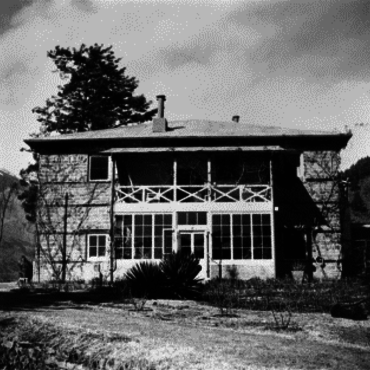
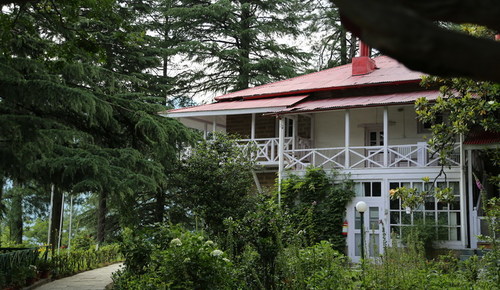
Nobody stayed in this two-storied stone building. It turned out that the house had been built in the previous century, in 1880, by the English Colonel Henry Rennick and was later acquired by the Raja of the Principality of Mandi. It was a secluded place far from the railway, and all roads and in winter all paths leading to it were under snow. Even in summer the villa was only accessible by a footpath or on horseback.
Nicholas Roerich instantly liked the house and brought it from the Raja of Mandi. He decided to settle with his family here, in the place overlooking the mountain village of Naggar...
At present, a path paved with stone tiles leads from the entrance gate to the House. It passes between the lushly overgrown shrubs, trees and camellias planted by Helena Roerich herself and rose bushes so much loved by her. Daffodils and irises, lilies and Indian chrysanthemums bloom here in different times of the year. In early summer visitors can enjoy subtly smelling snow-white magnolia flowers and in July the blossoming of sweet-scented linden.
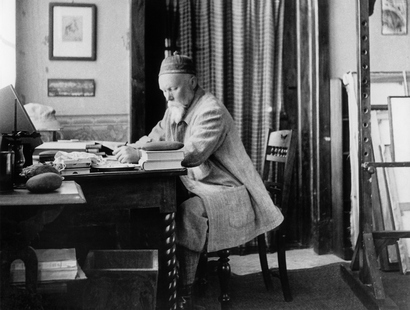
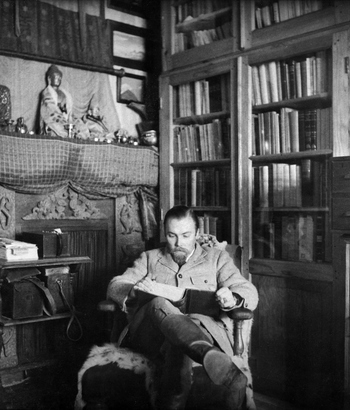
The high easel with traces of paint on it and the memorial desk take us to the times when Nicholas Roerich’s studio was housed here. So many wonderful paintings saturated with the most sublime spiritual energies were created by Nicholas Roerich in his studio, so many essays were written here! “His day started very early,” narrated Svetoslav Roerich. “He got up at five o'clock in the morning and started working on paintings. If there were other tasks, he engaged into daily routine... Nicholas never hurried, never fussed, he always worked in a steady manner. For example, when he wrote he did it slowly but his thought was so harmonized with the speed of writing that he expressed completed thoughts without any corrections or slips of the tongue... In the afternoon there were meetings which were part of my father’s public life, he also made his notes, listened to music in between – that’s how he sort of refreshed himself – and then till late night he went on working. And thus his days were always filled with feverish creative activity.”
The door leading from Nicholas Roerich’s studio to the study of his eldest son George Roerich was closed at those times and one could enter it only from the hallway (currently it is the second entrance to the House from the west side, and it is closed to visitors). The archive photos help us imagine the ambience and the décor of the study. The walls were covered up with cupboards stacked with research works and ancient manuscripts. Catalogue drawers contained George Roerich’s extensive filing with linguistic, historical and archaeological data. Route maps of expeditions, items of horse harness, Buddhist thangkas and artworks hardly complete the list of things that surrounded George Roerich, which testified to his diverse interests and meticulous research work.
In 1933 in one of her letters Helena Roerich wrote: “He works and manages to do surprisingly a lot, it’s surely due to his remarkable ability to work systematically which he inherited from his father. At present, apart from his administrative work at the “Urusvati” and publishing the journal, articles, the Tibetica Series and his major work on the history of the Orient he is working on the Tibetan-English dictionary. This work is enormous as it includes multiple Sanskrit equivalents explaining Tibetan terms. His book “Trails to Inmost Asia” has seen two English editions, one German and one French...”
By one o'clock in the afternoon Nicholas, Helena, George and Svetoslav Roerich and the Secretary Vladimir Shibayev would gather in the Dining Room, i.e. the central room on the ground floor of the House. The memorial display of the Dining Room is partly restored based on the available archival photographs and has been opened for visitors since June 2014 (through windows and glass door). Visitors can see the memorial dining table where the family gathered together, the family’s cutlery on the table, the antique crockery set and the silver napkin rings engraved with the initials of the Roerichs. The foldaway screen covers the entrance to a small utility room leading to the passage and the summer kitchen from where meals were served to the table in the Dining Room. The interior is decorated with bronze ritual articles from the Roerichs’ collection. Several modern Buddhist thangkas were added to reconstruct the historical ambience of the room. Here, in the Dining Room, the family received guests and arranged official meetings and receptions.

Helena Roerich’s desk is the main exhibit of her Study. The kerosene lamp and the photos of Nicholas and Helena Roerich’s spiritual Master, notebooks with diary entries, letters, books, and a bouquet of fresh flowers...
The Living Ethics tells us about the Cosmic evolution of mankind and its characteristic features, and the role of man in its most complex processes. It combines the achievements of modern scientific and philosophical thought of the West and the ancient wisdom of the East, it brings together the earthly and the heavenly, the man and the Cosmos. Helena Roerich, a most educated person of her time, recorded and systematized the Teaching, and Nicholas Roerich’s creative work – artistic, literary and scientific – was based on these very ideas. And today the House preserves books with notes and corrections made by the hand of Helena Roerich.
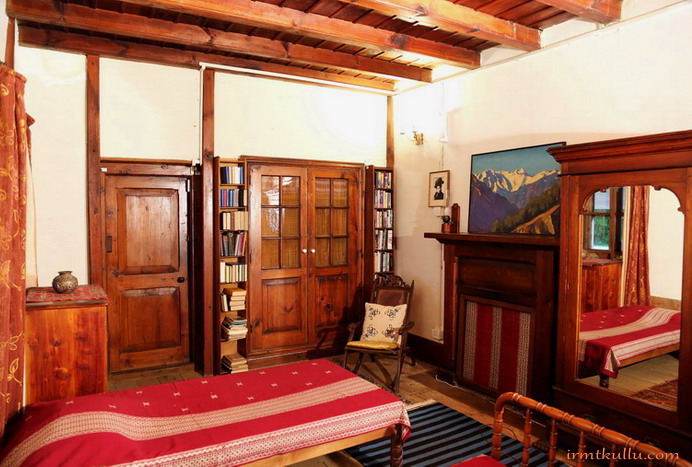
After a working day the entire family gathered in the Living Room or in the Library(a veranda room) on the first floor. The display of these two rooms is well observed from the open gallery around the House through the large windows and glazed balcony doors. In the times of the Roerichs old thangkas and their favorite paintings were hanging on the walls, and rare manuscripts, valuable books and music records were kept in the cupboards. According to eyewitnesses, bronze altars stuffed with the images of Hindu gods, allegorical animals and dragons, Buddhist banners, paintings on religious themes and other unique works of art collected in Tibet, the Himalayas and Mongolia during the Central Asian Expedition created a magical atmosphere of extraordinary beauty in the House.
In these rooms they would share their impressions of the day, make plans for future and have the most intimate conversations. All the dwellers of the Roerichs House loved music. They often played music records of Wagner, Scriabin and Stravinsky. They never got tired of listening to Rimsky-Korsakov, Grieg, Sibelius and Schubert. In the silence of the Himalayas the music sounded particularly sublime, reverent and solemn. Vladimir Shibayev recalled, “Nicholas Roerich, Helena Roerich and George and Svetoslav, if not travelling or in an expedition, would spend every evening after dinner in the main hall in silence listening to music or talking quietly. Helena or Nicholas used to decide on the “programme” and I wound up the gramophone and played a record. <...> The hours thus spent in the semi-darkness of the dimly lit room were extremely uplifting and magical to me. At these hours something new was emerging and shaping in my consciousness and I always reverently waited for their arrival.”
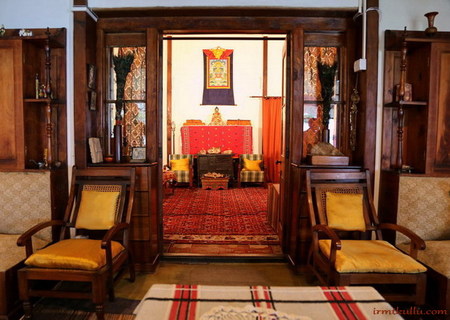
Helena Roerich wrote, “The aura of our house here is equated with the highest Ashram because we live in the closest spiritual communion and full harmony. Truly, the atmosphere is filled with the best emanations. And such emanations can only be useful...”
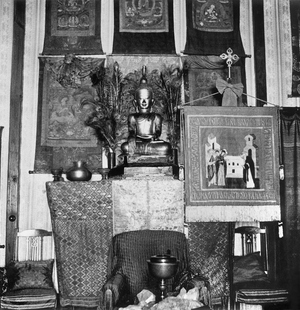
In August 1945, Svetoslav married the famous Indian actress, the grandniece of Rabindranath Tagore Devika Rani. He brought his wife to the Kullu valley and his Studio became Devika’s study. His creative and scientific work, exhibitions of his paintings, the work for the promotion of the Roerich Pact in India kept Svetoslav Roerich always on the move, and Devika would always accompany him. In 1949, Svetoslav Roerich and Devika Rani moved to the Tataguni Estate near Bangalore, but almost every summer they visited the Himalayan Roerich Estate.
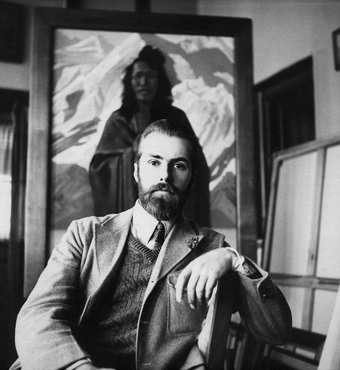
The Roerich House dwellers lived a life of their own. Ancient Kuluta – as the Kullu valley principality had been called before – lived its own life. But the villa and the valley were not alien to each other. The locals loved and respected entire Roerich family for their kindness, sympathy and willingness to help. In the mornings they often brought flowers to Helena and Nicholas Roerich. On the days of festivals they would appear with touching gifts and dance at the gate of the villa. The valley residents called the artist “Maharishi” or Great Sage. They came to see his paintings. They stood speechless awed by the beauty revealed to them...
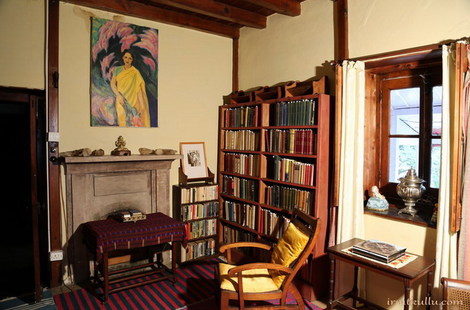
Many years have passed but even today those who walk by the Estate stop by the fence and bow to the House where the great artist Nicholas Roerich lived, thought and created along with his wife and his leader Helena Roerich and their two sons George and Svetoslav, the worthy successors to all of their parents’ initiatives and activities.
Currently, in collaboration with the International Centre of the Roerichs a large-scale research work aimed at studying and reconstructing the historic interiors of the Roerich House is carried out.
The meticulous study of archival documents, photographs and memorabilia; the study of artistic and literary heritage of the Roerich family members as well as eyewitnesses’ reports, photographic and film materials of different years; the repair and restoration of the Roerich House; the conservation and restoration of museum items, artifacts, documents and printed editions; the search for and acquisition of the missing elements for the development of new exhibitions, and preparation of information material for visitors – all this will breathe a new life into the unique space of the memorial House and allow numerous guests of the Trust to feel with their mind and heart a highly creative atmosphere in which the members of the eminent Roerich family lived, thought and created.
On the same floor there was Svetoslav Roerich’s Studio overlooking the Himalayan range and the Kullu valley. We can assume that in this room Svetoslav Roerich created such paintings as “Karma Dorje” (1934), “The Saga of Geser Khan” (1937), “Spring in Kullu” (1939) and many others. Perhaps, it was here that he painted some of the portraits of Nicholas Roerich in the period of 1930-1940s. Sometimes when Svetoslav was away Nicholas Roerich worked in his studio. In 1940, Svetoslav wrote to his parents from the Indian principality of Travancore, “...I am very pleased that Daddy is working in my room in the evenings.”
And today visitors can see the desk standing by the window of Svetoslav Roerich and Devika Rani’s room at which Svetoslav and Devika Roerich worked, read and conducted extensive correspondence. In 1964 Devika wrote to Pavel Belikov, an expert on Nicholas Roerich’s life and work, “At the moment, when I’m looking at the magnificent mountains appearing before my eyes just opposite my husband's studio window where I'm sitting, I’m mentally with you.” And Svetoslav Roerich added, “On your behalf I’ve bowed to the snowy peaks and laid some flowers to the monument of Nicholas Roerich.”
Nicholas Roerich's Studio
“In the morning after having breakfast upstairs Nicholas Roerich would always come down to his studio or to the adjacent small room that served as my office,” recalled Vladimir Shibayev. “I was waiting for him there being aware that he had not only already prepared a new article but usually a few letters as well. He would dictate an article for me to type it directly. I would read out to him in small excerpts what had been typed, he would listen carefully and now and then add or correct something, and after that he would continue dictating. Generally, Nicholas Roerich rarely altered a once dictated text just like he rarely reworked his paintings.”
George Roerich's Study
Living Room and Library
Svetoslav Roerich's Studio
Dining Room
Helena Roerich's Study
Her Study display contains the work of Helena P. Blavatsky’s The Secret Doctrine in 2 volumes translated by Helena Roerich from English into Russian. “I bow before the lofty spirit and fiery heart of our compatriot,” wrote Helena Roerich about Helena Blavatsky who in the XIX century for the first time brought to the Western world the knowledge about the White Brotherhood and the Mahatmas of the East.
The photo of Helena Blavatsky that belonged to Helena Roerich is also displayed here.
From her Study Helena Roerich observed the twin peaks of the “white giant” Gepang, or Mount “M” as the Roerichs called it. The mount “M” was also visible from Helena and Nicholas Roerich’s Bedroom adjoining the study. Its holy peaks in all their grandeur were captured by Svetoslav Roerich in his painting “Gepang” exhibited in the same room on the mantelpiece. Nowadays the lushly overgrown greenery partly conceals the Gepang, but in clear weather its snow-white peaks are perfectly visible from the open gallery. They are well-outlined against the blue sky and the century-old Himalayan pine with four powerful trunks stretching upward.
“All day long from morning till night I’m sitting at the desk feeling reluctant even to come out into the garden in order not to lose a minute,” wrote Helena Roerich in one of her letters. “In addition to the books of the Teaching and all proof-readings in three languages – “Agni Yoga” has been published in French as well – I am also translating “The Secret Doctrine” with the first volume being ready and more than half of the second volume done so far, “The Mahatmas’ Letters” are being translated as well, but the final version isn’t ready yet. <...> So, we are all working and our rest is only in changing our activities.”
It is here at this desk that the titanic work of creating the Teaching of the Living Ethics, or Agni Yoga, the philosophy of Cosmic Reality, which Helena Roerich recorded in collaboration with the Mahatmas, the Teachers of the East, was being done. Sitting at this desk Helena Roerich translated, did proofreading and editing, answered the letters of her numerous correspondents explaining the most important doctrines of the Living Ethics in a simple and comprehensible manner.
On the bookcase shelves in Helena Roerich’s Study one can see various editions of the volumes of the Living Ethics: The Call, Illumination, New Era Community, Infinity, Heart, Aum, Fiery World, Brotherhood etc.
